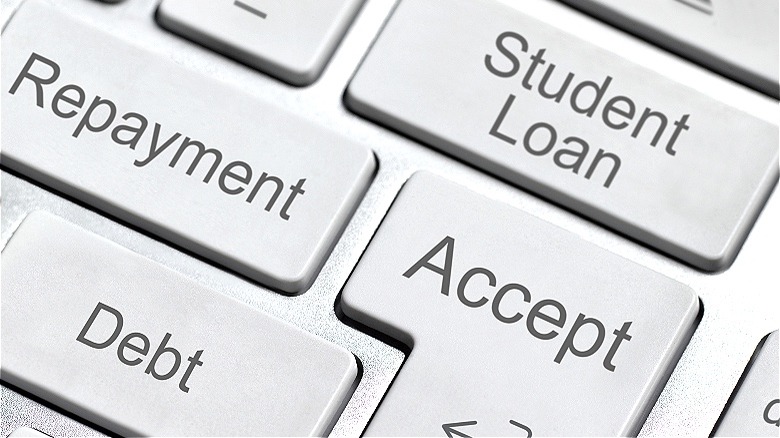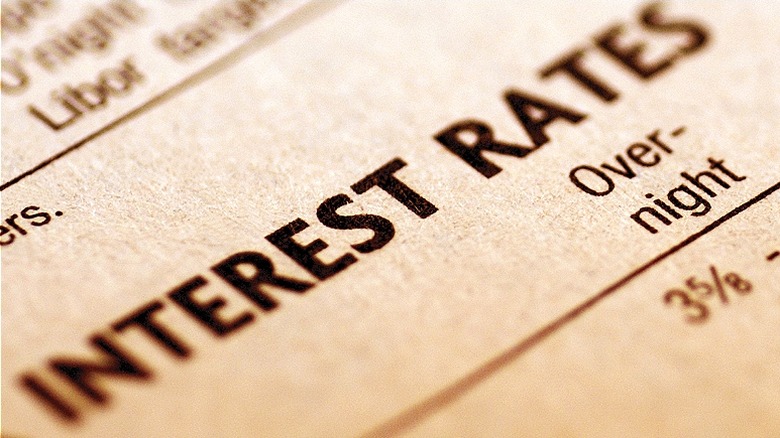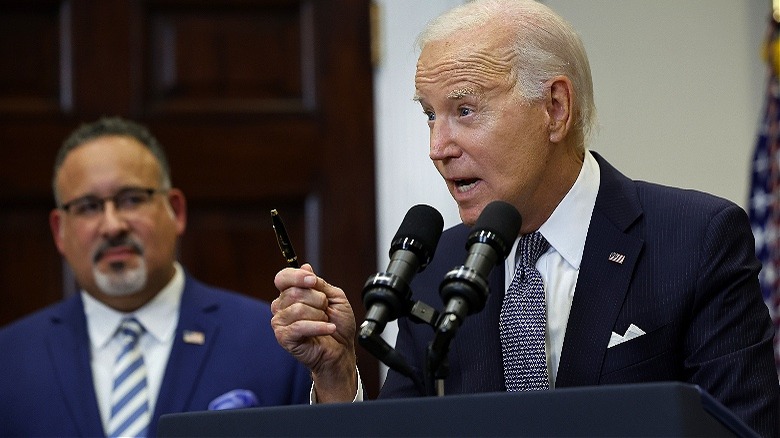Student Loans: What You Need To Know Before Switching To An IDR Plan
Maybe you're fresh out of college, armed with a diploma but with no ready work lined up. Maybe you've been gainfully employed for a few years but suddenly find yourself between jobs. Or maybe you're a freelancer with a fluctuating income. Whatever your case may be, you still have the same money problem: that student loan payment comes at the end of every month and your wages can't keep up with the standard repayment plan.
Under the standard plan for federal student loans, borrowers make fixed payments after graduating, with the amount set based on the total borrowed to get the loans paid off within 10 years. However, if a borrower is experiencing financial hardship, they may qualify for an income-driven repayment plan, or IDR. Four such plans are currently available for federal loans. Each will set the borrower's monthly payment as a certain percentage of their discretionary income, determined by the demands of the particular plan. IDRs can significantly relieve the month-to-month debt burden of a student loan, and you may even see a good chunk of your loans forgiven after a certain time.
With this said, there are provisos you should learn about before jumping into an IDR. The different plans offered have conditions to satisfy, stipulations affecting interest on the loans, and ongoing legal hurdles to weed through before you can come out the other side of the college-debt express. Here's what you should know before applying for an IDR.
Qualifications for IDRs vary based on the plan
If you're in a situation where an income-driven repayment plan sounds appealing, you'll need for your account to be in good standing. If a borrower is in default, they're ineligible for any IDR. (By the way, here's what happens if you miss a student loan payment.) But assuming that's not the case, at least one IDR has straightforward eligibility requirements: the Saving on a Valuable Education (SAVE) plan, which is open to anyone with a subsidized or unsubsidized direct federal loan or a PLUS loan issued to a graduate or professional student.
Other IDRs are more demanding. Specifically, the Pay As You Earn (PAYE) plan and the Income-Based Repayment (IBR) plans are only open to borrowers who would pay less under them than they would under a standard 10-year plan. To determine this, the application process for both plans would estimate your payments based on income and family size (a general rule of thumb is, if your loan debt exceeds your annual discretionary income, you qualify). In addition, PAYE plans are only open to new borrowers, relative to October 1, 2007, who received a direct loan on or since October 1, 2011.
The fourth IDR option is the Income-Contingent Repayment (ICR) plan. Like the SAVE plan, it's open to anyone with a qualifying federal loan. Unlike SAVE, the ICR plan is also eligible for parents who took out PLUS loans to help with their children's education. For the PLUS loan to be eligible under ICR, however, it needs to be consolidated.
Each IDR sets your minimum monthly payment differently
If you and/or your parents are eligible for any of the four income-driven repayment plans available for federal student loans, you'd now have to decide on which student loan repayment plan would best suit your needs. For starters, the Saving on a Valuable Education plan fixes payments at 10% of your discretionary income, determined by annual earnings and family size. The same goes for the Pay As You Earn plan, with the caveat that 10% of a person's discretionary income can't exceed what their monthly payment would be under a standard repayment plan.
This same caveat holds true for the Income-Based Repayment plan, though IBR payments can be between 10% and 15% of discretionary income. It depends on when you received the loan; if you're a new borrower relative to July 1, 2014, it's 10%, and if you already had debt prior to that date, it's 15%. The Income-Contingent Repayment plan, meanwhile, offers two repayment options for those who enroll. Depending on which is the lesser payment, you might pay 20% of your discretionary income, or a fixed payment over 12 years adjusted based on your income.
You'll need recertification if you're on an IDR
No matter which income-driven repayment plan you choose, you'll be enrolled in a repayment plan for student loans derived in part from your income. Naturally, that means you'll be required to report what you earn. Under the terms of an IDR, you'll have to update your loan servicer every year with information about your income, as well as family size — even if they haven't changed, a process the Department of Education labels recertification.
Recertification can be an automatic process. If you authorize disclosure of your tax statements, your loan servicer will, with notice, make any necessary adjustments to your payment. If you choose to do it manually, your loan servicer will send you a notice ahead of the annual deadline to report. You also can provide notice of any major changes to income or family size throughout the year, though you're only required to do so once. (On that note, what actually happens if you don't file a tax return by the tax deadline.)
Whether you automate recertification or handle it manually, however, you'll want to make sure you meet the deadlines. Failure to regularly recertify your income and family size can get you kicked off an IDR in the case of the SAVE plan, or see your monthly payment set at the rate it would be under standard repayment in the other three.
An IDR isn't always the best option, thanks to interest
Enrolling in an income-driven repayment plan can mean much less money out of your bank account every month. In the case of a Saving on a Valuable Education plan, if you make less than 225% of the Federal Poverty Line for your family size, you might not pay anything on your loan at all. And if you borrowed less than $12,000, your loans will be forgiven after 10 years under SAVE. If you borrowed more, or if you have another IDR, loans can be forgiven after 20 to 25 years.
However, if you have an outstanding balance at the time your loans are forgiven, you may owe taxes on that figure. And lowering your monthly payment can extend your repayment period, which means you'll accumulate more interest on your student loan. Interest that isn't covered by your monthly IDR payment will be waived under SAVE, but under other plans, you can end up with much more interest than you would have under a standard repayment plan. (Learn about what drives interest rates.)
The SAVE plan is currently in legal limbo
The SAVE plan was created in the wake of the Supreme Court's 2023 decision striking down the Biden administration's student loan forgiveness plan. But SAVE itself soon faced legal challenges of its own. Two different groups of states controlled by the Republican Party launched lawsuits seeking to shut down the plan. They argue the U.S. Department of Education doesn't have the authority to cancel or alter payments made on student loan debt without authorization from Congress.
As of July 2024, the fate of SAVE remains in legal limbo. Injunctions were placed on SAVE's debt cancellation and full implementation of lowering payments while the matter was litigated. A federal appeals court allowed the lowered payments to go forward, but on July 18, the 8th Circuit issued a temporary but comprehensive pause on the SAVE plan until it could decide on a long-term block requested by the states challenging the plan in the first place.
In response, the Education department placed 8 million loan accounts in forbearance while legal proceedings continue. Three states, in an effort unrelated to the Republican-led challenges to SAVE, have asked the Supreme Court to review the plan and weigh in on blocking its implementation.





